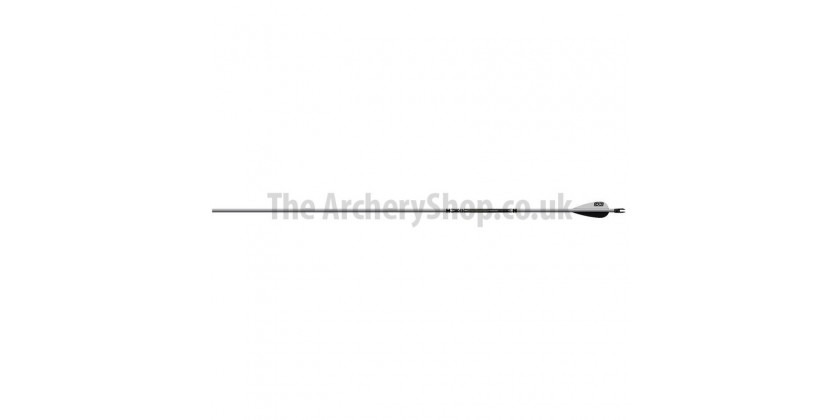My interest in the FMJ Match peaked soon after it was announced due to the advertised specs, notably the tight straightness tolerance (Guaranteed straightness of ± .001″ while X10 Protours are advertised at ± .0015”), high G.P.I (10 for a 400 spine) along with the superior durability due to the FMJ construction.
Once I had done some research on the shafts I ordered a set in 400 spine from Carl at The Archery Shop. Having consulted the Easton Spine Chart and Archer’s Advantage, these references recommended the stiffer 375 spine over the 400 spine. However, I went with the latter due to the slightly lower shaft weight and outer diameter (note that Easton does not list outer diameter relative to each spine).
I intended to set these arrows up for WA 720 rounds as I was keen to see how a slightly heavier shaft with a moderate outer diameter (4mm) would perform against a slightly lighter and skinnier shaft (Nano Pro’s being my choice for outdoor target archery). The shafts arrived in good time and I proceeded to cut them to 28.75 inches (I usually cut an arrow 2 inches shorter than the AMO draw). Before cutting them, I spun the shafts on my Pine Ridge arrow spinner and found that most of the shafts were incredibly straight. I had minor wobbles on the nock end of a couple of the shafts and decided to cut 2 inches off the back of them. The option to cut from the back without affecting how the arrow behaves is an advantage of parallel shafts over barrelled or tapered designs; and finished the process by squaring both ends with my G5 Arrow Squaring Device. Cutting your arrows with a high quality arrow saw is essential as factors such as length, consistency and component fit play a big part on how well they will perform.
I ordered the arrows with a set of 120 grain Carbon One points, along with some Beiter 12/2 Hunter nocks, Carbon One and A/C/G pins in order to test which components fit best. The point fit was reasonably good. The FMJ Match arrows are designed to take Carbon One components, and although these are an economically sound choice, I would prefer an FMJ Match specific point for the larger spine sizes as seen on the A/C/G. Another important step involves the use of original Easton Hot Melt Glue when installing your points. It is the only type of glue I use as it was designed for this specific application, unlike other forms of hot melt.
Unfortunately, I did not find any Easton nock or pin combination which gave me a satisfactory fit. The small yet noticeable overhang on Carbon One and A/C/G pins between the aluminium outer jacket and carbon core was a worry, as any rear impact would potentially cause the shaft to split. This may only be an issue with the stiffer spines, I have not tested to see if this is the case on every size. I have found that the ideal choice is the Beiter 2-95 Hunter In-Out nock, as it provides a good fit around the rear of the shaft and offers a reasonable amount of protection.
In terms of weight tolerance, I found all 12 shafts to be within a grain of each other out of the box. Having assembled them, the final weight average was +/- 2 grains (approx. 0.13 grams!). I was eager to get outside and test them at distance but, unfortunately, I had to wait a while for reasonable weather. When I finally got the chance to try them at 50 meters, I was very impressed!
For 720’s, I would say that these arrows are at least on par with more expensive and skinnier offerings such as the Protour and Nano Pro. The slightly heavier shaft weight and comparably small outer diameter mean that these shafts are very resistant to wind drift given the right bow setup. On my equipment, I was getting approximately 270 fps with a 425 grain arrow. I could probably squeeze a little more speed from them if I cut half an inch off to give me a length of 28.25 inches and a 420 grain arrow. Personally, I would recommend sticking to the 120 grain point option.
Accuracy and consistency aside, there are some issues to note. Firstly, the aluminium outer jacket means that you will need experience with fletching aluminium outdoors shafts, something that most archers have not done in a while. I had a few vanes come off from impacting other arrows in a group, but that is to be expected when using superglue without a wrap on aluminium shafts.
Whilst durability on hard targets is of little concern due to the aluminium outer jacket, I would strongly encourage Easton to develop some form of collar or at least a pin with a larger crown prevent this from happening too often.
To conclude, the FMJ Match is an exciting new shaft, and shows a lot of promise for the 720 round. However, I would need to start using wraps in order to shoot them competitively, and doubt that they will be quite as effective as the micro diameter shafts out at 90m. Personally, I would recommend these arrows to compound archers who shoot mostly 720’s, field or ladies FITA’s as they will shoot just as well out to 70m. Furthermore, I would advise picking at least one spine lighter than you would normally use due to the heavier shaft weight. Hopefully this will mean that you get a better fit with components compared to the larger spines, which will also improve their durability.
Sources:
Easton Target Podcast (Steve and George comment on the FMJ Match, starts around the 54 minute mark)
https://eastonarchery.podbean.com/e/easton-target-archery-podcast-ep44/
George Tekmitchov’s overview
Easton Website
https://eastonarchery.com/target/fmj-match/
Greg Poole from BowJunky on arrow building (caution strong language)

